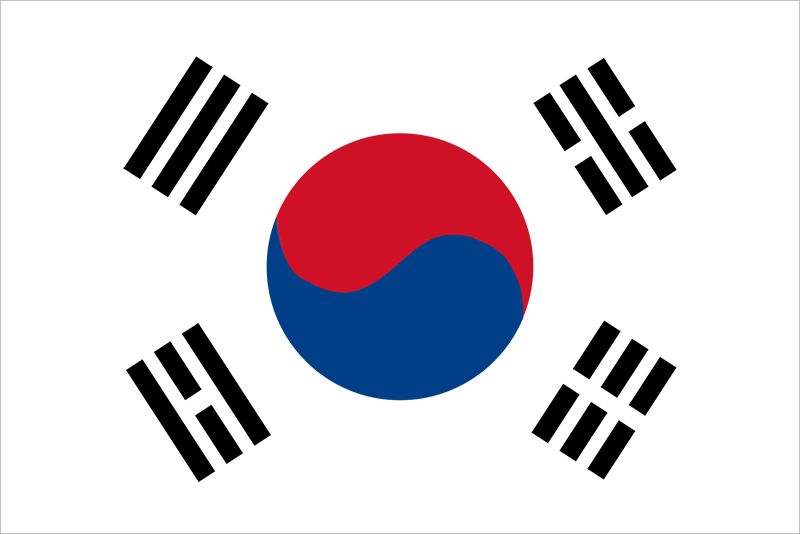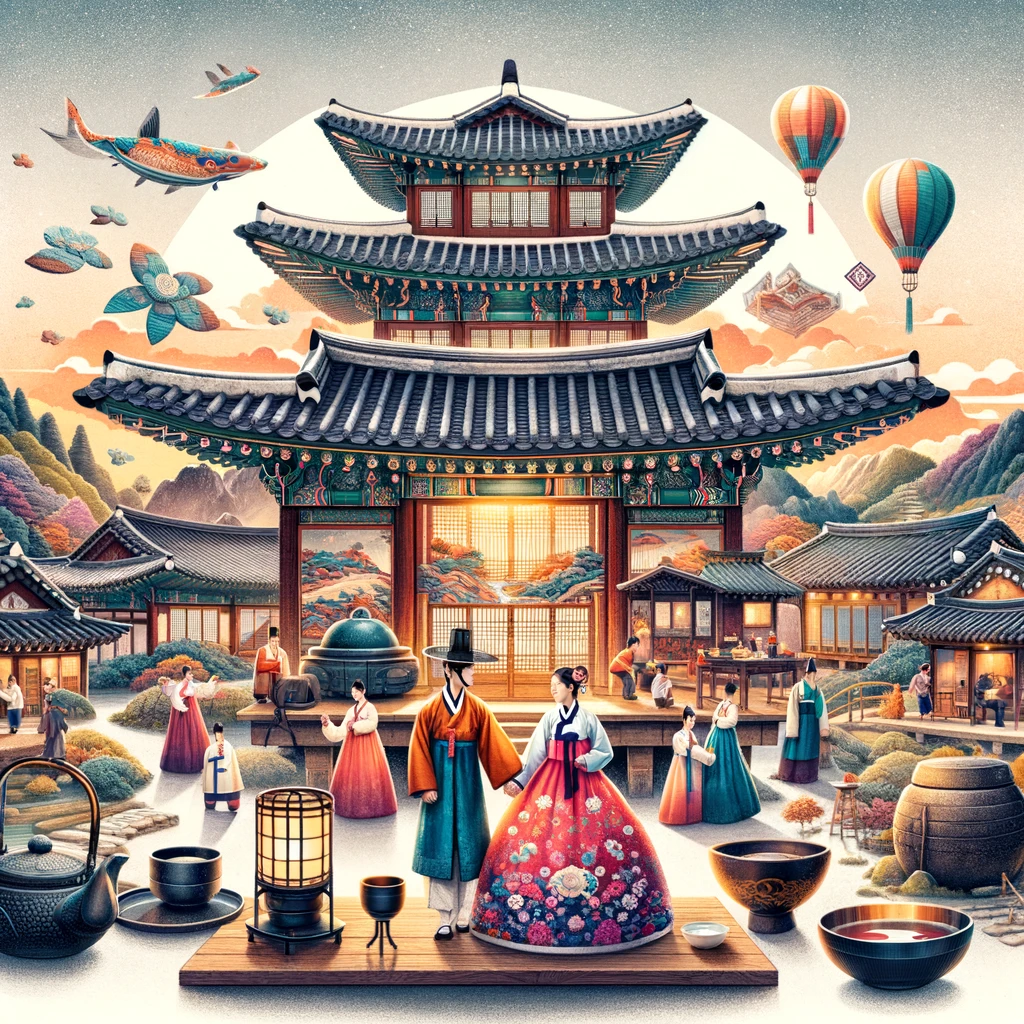South Korea, with its unique blend of tradition and innovation, is one of the most fascinating countries on the global stage. In recent decades, the country has undergone remarkable transformations in culture, technology, and lifestyle.
Culture:
South Korean culture has deep roots in history and Korean traditions, including arts such as traditional music, dance, painting, and ceramics. At the same time, South Korea is a leader in modern fields such as K-pop music, cinema, and fashion. K-pop, in particular, with groups like BTS and Blackpink, has a wide global influence.
Technology:
South Korea is known as one of the most advanced countries in technology. The country has the highest internet speed and one of the highest smartphone penetration rates in the world. Korean companies like Samsung and LG are pioneers in electronics and digital industries. Additionally, South Korea engages in innovative activities in robotics, biotechnology, and space technology.
Special features:
- Hangul: South Korea’s writing system, Hangul, is famous for its simplicity and scientific nature. This language was created in the 15th century by King Sejong the Great to enable ordinary people to read and write easily.
By preserving its rich traditions while embracing and advancing cutting-edge technologies, South Korea has managed to carve out a unique position in the world today.

South Korea is known as one of the largest export-oriented economies in the world. The country has experienced significant economic growth in recent decades and has become a leader in industrial and technological fields globally. South Korea’s exports include a variety of products and services, some of the most important of which are highlighted below:Electronics and Information Technology:South Korea is one of the largest exporters of electronic products, including mobile phones, tablets, televisions, and home appliances. Brands such as Samsung and LG are well-known worldwide.Automotive Industry:The automotive industry is also a significant part of South Korea’s exports. Companies like Hyundai and Kia are popular in global markets for producing quality and affordable vehicles.Semiconductors:South Korea is one of the largest producers and exporters of semiconductors in the world. Companies like Samsung and SK Hynix are major players in this industry, exporting memory chips and other semiconductor components worldwide.Petrochemicals:The petrochemical industry in South Korea also contributes significantly to exports, producing and exporting chemical products, plastics, and petrochemical materials.Steel and Metallurgy:South Korea is one of the largest producers and exporters of steel in the world, with companies like POSCO competing globally.Cultural Products:In addition to industrial and technological products, South Korea has become an important exporter of cultural products in recent years, especially K-pop music, films, and television series. These cultural products play a significant role in promoting Korean culture and increasing South Korea’s soft power globally.

South Korean cinema has emerged as a prominent force in the global film industry in recent years. With productions that cover a wide range of genres, from deep social dramas to thrilling action films and psychological horror movies, Korean cinema has been able to attract international audiences.One of the prominent features of Korean cinema is its deep focus on quality cinematography, acting, and storytelling. Korean films are often known for their intricate plots, deep character development, and attention to emotional details.With increased access to global content through streaming platforms, Korean films such as “Okja,” “Parasite,” and “Squid Game” have been able to capture global attention. “Parasite,” directed by Bong Joon-ho, in particular, made history as the first non-English language film to win the Academy Award for Best Picture.South Korean cinema excels in various genres such as romance, comedy, horror, mystery, and historical films. This genre diversity has allowed Korean filmmakers to portray a wide range of human experiences and compelling stories.Korean films often reflect the values, traditions, and specific social issues of South Korea, providing international audiences with the opportunity to become familiar with aspects of Korean culture that may be less known.Overall, South Korean cinema stands out due to its high-quality productions, innovative storytelling, and significant impact on the global film industry.

This beautiful image showcases traditional Korean clothing, called Hanbok, which is meticulously designed with precision and elegance. The men’s attire includes a Jeogori (a short jacket with long sleeves) and Baji (wide pants), while the women’s attire consists of a Jeogori and Chima (a long, voluminous skirt). The colors and patterns used in these garments symbolize the beauty and simplicity of these traditional clothes, as well as the beautiful textures and elegant silhouettes they create. The simple background of the image preserves the focus on the delicate details and vibrant colors of the Hanbok, giving it a magnificent appearance.

One of the places widely known as one of the most beautiful places in South Korea is Jeju Island. Jeju Island, the largest island in South Korea, is famous for its stunning natural landscapes, including beautiful beaches, waterfalls, mountains, and volcanic caves.Features of Jeju Island:- Hallasan Mountain: The tallest mountain in South Korea located in the center of Jeju Island, with beautiful hiking trails in a national park.- Manjanggul Cave: One of the largest lava caves in the world formed by limestone columns and mesmerizing geological formations.- Cheonjeyeon Waterfall: One of the most beautiful waterfalls on the island that directly flows into the sea.

The second beautiful and scenic place in South Korea could be Seoraksan National Park. Located in the eastern part of South Korea, this park is famous for its stunning mountain landscapes, dense forests, and beautiful waterfalls. Seoraksan is one of the most popular destinations for hiking in Korea, especially in spring when azalea flowers turn the mountains red, and in autumn when the leaves turn golden and red. The park also boasts one of the highest peaks in South Korea, Mount Daecheongbong, which offers a 360-degree view of the surrounding area.

The flag of South Korea, known as “Taegeukgi,” is a powerful symbol of the philosophy and values of the country. This flag has a unique design that combines traditional Korean philosophical elements with modern symbols. The main elements of the flag include:1. Taegeuk:At the center of the flag, there is the symbol of Taegeuk, which consists of two parts: the red part representing positive and active elements (yang) and the blue part representing negative and receptive elements (yin). This design is derived from the philosophy of yin and yang, symbolizing balance and harmony in the world.2. Four Trigrams:In the four corners of the flag, there are four trigrams, each representing a natural element and a cardinal direction:- Geon (☰) symbolizes heaven and the north.- Gon (☵) symbolizes water and the west.- Gam (☶) symbolizes earth and the south.- Ri (☲) symbolizes fire and the east.These trigrams represent ethical and philosophical principles that influence the lives of Koreans and signify the pursuit of balance and harmony in life.The white background of the flag symbolizes peace and purity. The color white in Korean culture also represents brightness and purity.The Taegeukgi flag not only symbolizes the national identity of South Korea but also depicts deep cultural and philosophical values that this society holds dear.


Leave a Reply